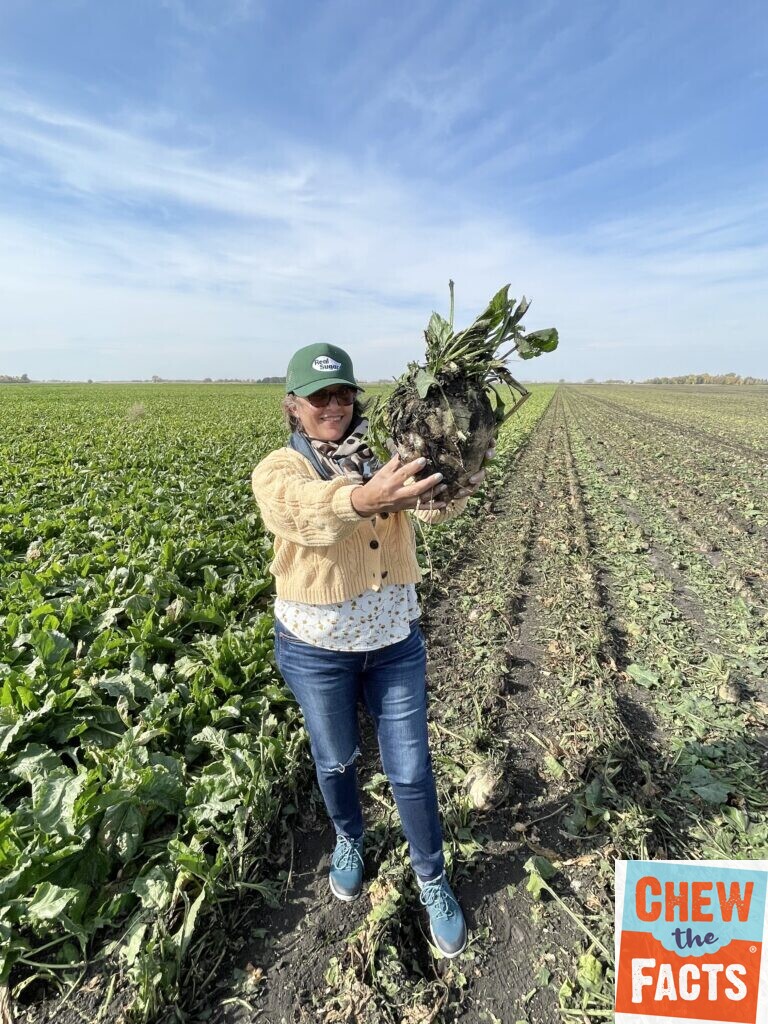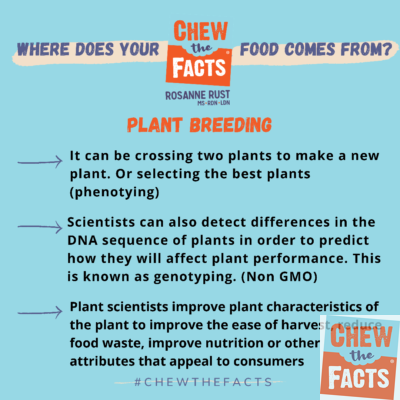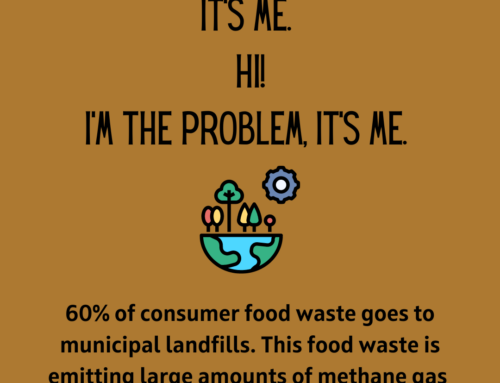Just about everything you purchase in a grocery store has been improved through plant breeding. Through generations of research, scientists have learned a lot about how to make seeds and plants better – more tolerant to new weather patterns, draught or pest resistant, more nutritious, or better tasting. Lots of the traits that are built into seeds today offer plants that have a super high probability of success in the field….Music to a farmer’s ears!
Plant Breeding Increases Outputs, Decreases Inputs
Selective breeding occurs in plants by nature in some instances. Sometimes plant breeding can can be crossing two plants to make a new plant. Farmers select plants based on how they look and how well they grew (this is called phenotyping). This process is still used today, however it can take a lot of trial and error, and time.
There’s a lot of science here, so bear with me!
Gene Editing
Advances in genetics has allowed scientists to examine the DNA sequences in plants, through genotyping. Like phenotyping, this can determine which plants will have the best outcomes. However genotyping is much more specific than phenotyping because it can specifically identify and confirm the desirable traits.
So what is Gene Editing? Gene editing tools (like CRISPR) help scientists make changes to plants with precision. Changes introduced by gene editing are small modifications to a plant’s genetics. The results are often similar to the mutations found when a plant’s DNA is modified through nature. Gene editing is just faster!
Biotechnology and Genetic Modification
Food safety experts agree that GMOs are safe. A genetically modified organism is one that has undergone genetic modification. This modification has happened naturally since the beginning of time. As a result, over time, nature has modified almost everything we eat today. For instance, when farmers chose the best seeds each year from a crop, they were selecting the next crop’s genetics (by sight and hand).

The sugar beet farm I recently visited grows a strong, reliable crop thanks to genetic modification. More plants are grown on less land and pesticide use is significantly reduced.
All living things have DNA – person, insect or plant. It’s like a blueprint. Just as you would change a blueprint for a house, to make it more functional, plant scientists can move genes around.
Biotechnology, or Genetic Engineering allows plant scientists to modify and share the DNA of plants in a much more precise manner. By evaluating the DNA of the plant, they take a desirable trait found in nature and transfer it from one plant to another. Genetically modified seeds and plants go through rigorous testing before they go to market. It takes a a lot of research and testing to create a modified plant, and can take up to 13 years to bring it to market.
Why Change Plants?
These little changes to the seeds can have a significant impact on the ease of growing the crop and the dependability of harvesting a great crop each year. In other words, plant breeding helps farmers do the job of producing our food by:
- Strengthening traits that allow drought tolerance or improved nutrition
- Deactivating unfavorable traits, such as disease
- Creating plant varieties with the most desired characteristics (sweetness, firmness, texture)
Farming is hard work. All of the food in your local grocery store is the result of the crops that farmers across the country plant, sow, and harvest each year. Click To Tweet It’s all a little mind-blowing, but have no fear. We have regulatory bodies that monitor the progress and safety of seeds that go to market. These plant breeders know what they’re doing. Thanks to them, it makes it a little easier for farmers to manage their important work, while bringing consumers safe, nutritious, and affordable food.




